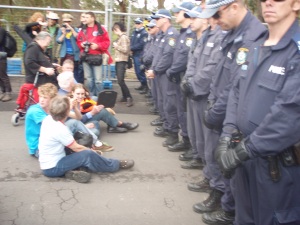According to recent data released by the Bureau of Statistics, Australian homes are officially the biggest in the world and growing. At 215 square metres, the average size of Australian homes is larger than the US (202 square metres) and almost three times larger than Britain (76 square metres). The consensus is that this is not a gold medal we should be proud of. Bigger homes means using more resources and potential to produce more greenhouse emissions, as well as urban sprawl and added strains on transport and infrastructure. Angus Kell, from the building advisory service to the Australian Institute of Architects, spoke to Crossfire about the possibility of regulating the size of homes.
While researching this story a few figures jumped out. Firstly, that households on average have 2.56 people, 1 in every 3.5 homes have 4 or more bedrooms, and 8 percent of houses are considered dwellings, or holiday homes. By our calculations thats an awful lot of empty beds. So we have a concern here not only of a lack of resources, but also a lack of affordable housing and also under utilised housing. Crossfire put some of these questions to Associate Professor Vivienne Milligan, who is involved in the City Futures Research Centre at the University of New South Wales.
On Crossfire last week one of the discussion points was why we feel the need to build such large homes here in Australia, and further research has revealed that Australians apparently have larger home because we are competitive. We measure our successes by the number of material things we own, not by how much we save.
Let us know what your thoughts are on this below. What do you think about the possibility of regulating the size of new homes?




